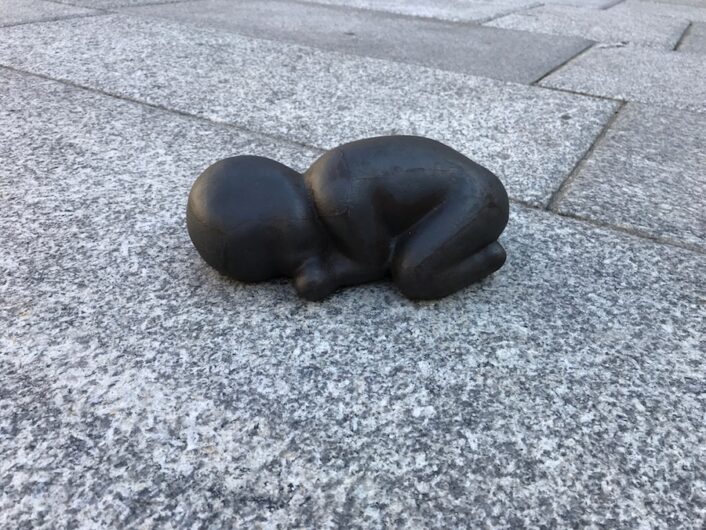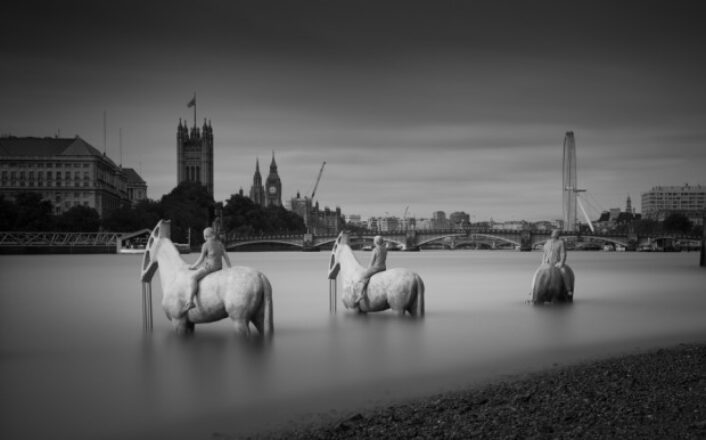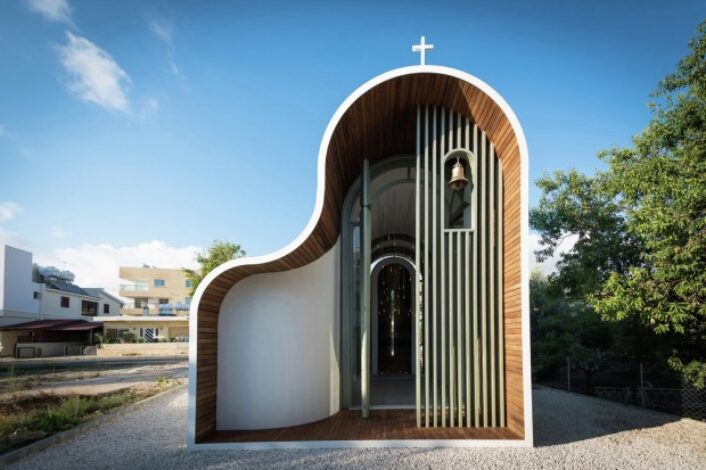Culture
Antony Gormley shines in Greece
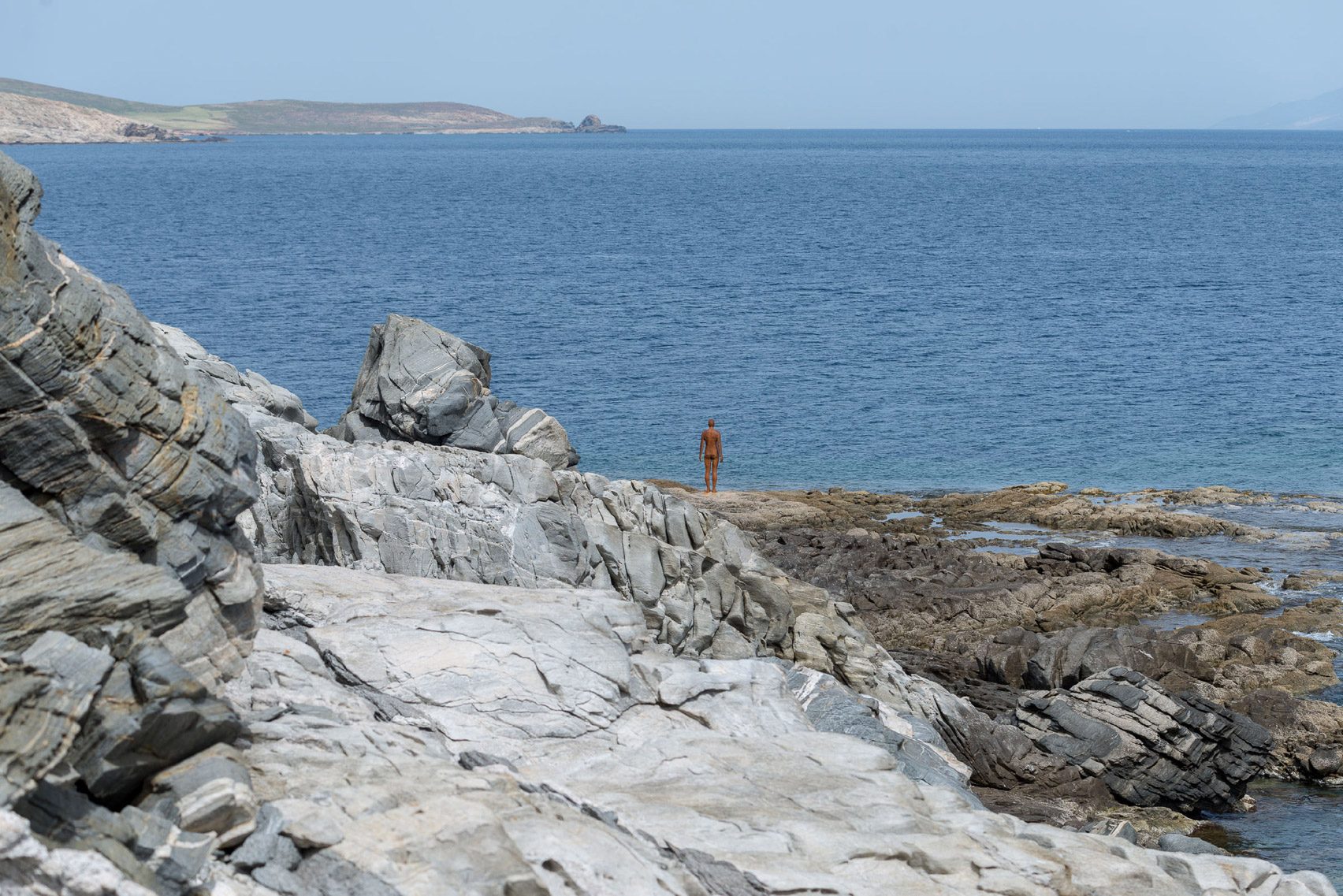
“6 Times Left,” 2009 on the Aegean island during the SIGHT exhibition in 2019.
Image courtesy of: Dezeen, photographed by: Oak Taylor Smith
There is so much beauty on the Greek islands that the British sculptor Sir Antony Gormley initially hesitated when asked to bring his art to the historic island of Delos. However it did not take too long for Gormley to realize how monumental this could be. Gormley said that he felt (courtesy of Myconian Collection), “an amazing privilege and extraordinary responsibility.”
The island of Delos remains unspoiled, and in recent times only guards and archaeologists have inhabited the roughly 3- mile-long by .75-mile-wide isle. As one of Greece’s most sacred sites, it is here that Apollo and Artemis were born. Along with the 9th-century BC birth of the god of light and the moon goddess, Delos became the place where one the greatest sanctuaries emerged. Courtesy of The Guardian, “Today, the remains of temples, altars, sculptures and votive offerings, the markers of the myths and rituals played out on Delos, stand alongside the magnificent ruins of a later period when the Cycladic island became a commercial centre, teeming with merchants and slaves.”
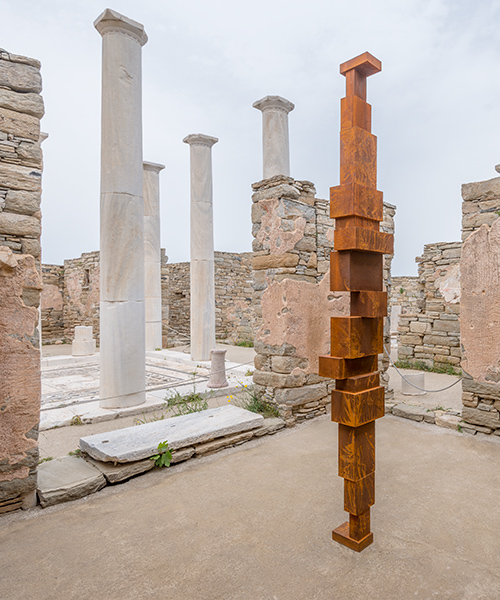
SIGHT was a site-specific exhibition that took place in 2019; it was an experiment that the Greek authorities undertook to try and change how people approach ancient monuments. The hope was for visitors to realize that the past is really only possible alongside the present. Considering the times in which we live, we are lucky that we have ample opportunities to experiment with the past.
At the UNESCO World Heritage Site, Gormley’s iron “bodyforms” are placed so that they can have “direct conversations” with the island’s ancient temples, houses, and statues. Gormley’s 29 sculptures are placed intentionally across the island… amongst ancient columns ruins, at the amphitheater’s center, overlooking the sea, and actually in the sea.
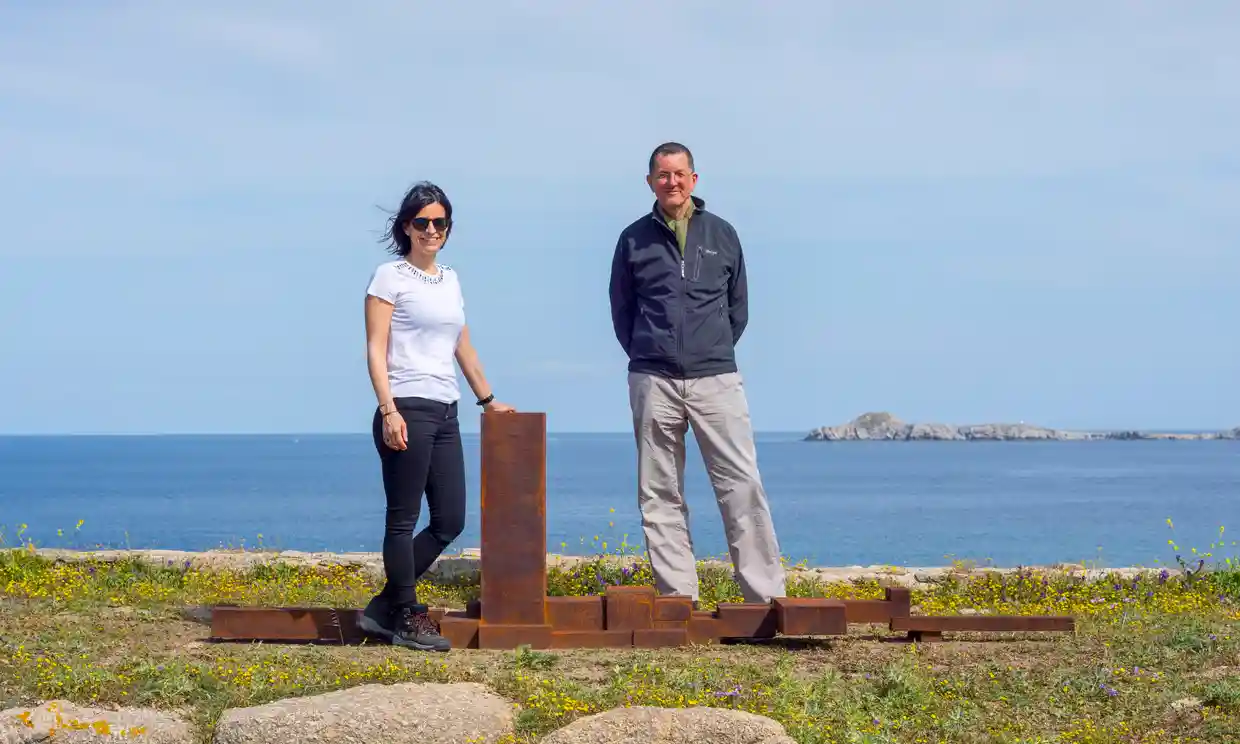
A curator and an artist… Elina Kountouri co-curated the project alongside Iwona Blazwick of Whitechapel Gallery.
Image courtesy of: The Guardian, photographed by: Oak Taylor Smith
Historically, Delos was a pilgrimage site for those coming from across the Mediterranean. As such, Gormley’s pieces were perfect in that they beautifully interacted with the isle’s topography, statues, and building ruins. All of the 29 sculptures featured were created within the last twenty years. Five pieces were commissioned specifically for this exhibition. The exhibition was organized and commissioned by NEON, an organization that is passionate about broadening “the appreciation, understanding and creation of contemporary art and culture in Greece- in collaboration with the Ephorate of Antiquities of Cyclades.”
Dr. Demetrios Athanasoulis, the department head of antiquities in the Cyclades, worked with NEON’s director, Elina Kountouri, to bring this project to fruition. From the start, Athanasoulis knew that the British sculptor was prefect for the job as explained by this statement, “few artists would be able to conceive of works that could amplify a visitor’s experience of the lost civilization– animating the island’s geological and archaeological features – without being tempted to compete with Delos’s landscape and history.”

“Connect,” 2015.
Image courtesy of: Dezeen, photographed by: Oak Taylor Smith
A lot of persuasion skills were necessary in order to convince Greece’s central archeological council to give this ambitious project the green light. Specifically, the council wanted to ensure that the island’s ruins were left completely unaffected. It took 18 months to come up with an implementation plan that everyone was happy with. Even after the council approved the show, changes were made… for example, eight sculptures had to be helicoptered in and artificial cement stone was added to the rocks because even rocks are considered sacred in Delos.
In order to properly prepare for the project, Gormley spent some time on the island in 2018. This was necessary for the artist in order to properly understand the barren landscape. The figures were not allowed to touch the island’s surfaces… not even its soil. Invisible protective skins were installed; in addition to supportive pieces to help with the figures’ enormous weight of at least 310 pounds. Gormley’s frugal forms are rusty and have unseeing sockets that force us to turn our eyes inward.

“Water,” 2018. This sculpture was commissioned specifically for the exhibition.
Image courtesy of: Design Curial, photographed by: Taylor Oak Smith
Perhaps the most pressing and important question, when considering Gormley’s stunning 2019 exhibition is: does contemporary art impact our appreciation of sacred and time-honored beacons? The sculptor hopes that he is able to present his pieces in a way that powerfully marks time and space. To conclude, Gormley said, “In this atmosphere of light there is a feeling of timeliness, of being outside industrial time. Sculpture is a threshold to another attitude to time; it provides the invitation to escape mechanised time as we know it.” We agree wholeheartedly!
